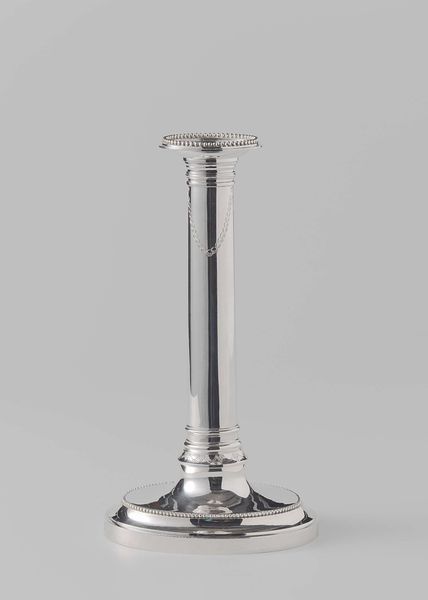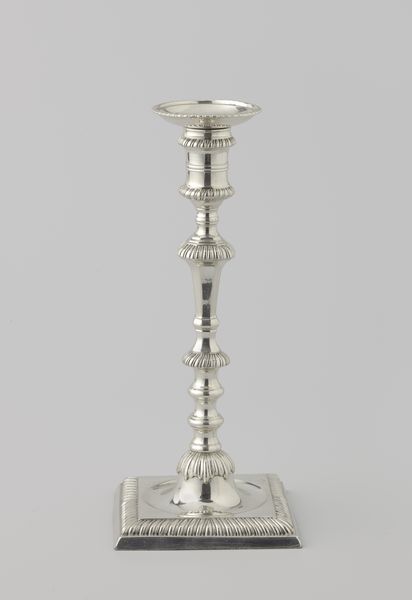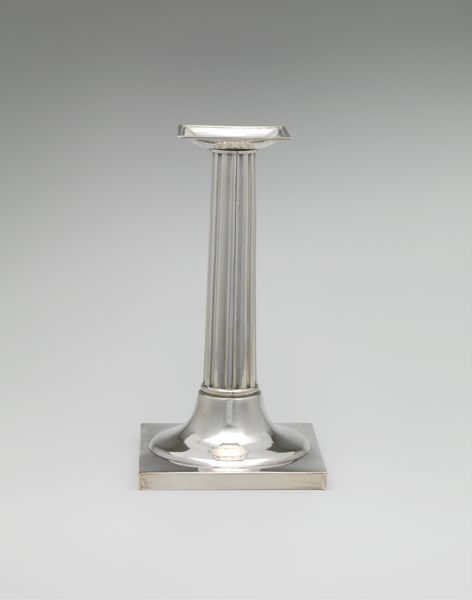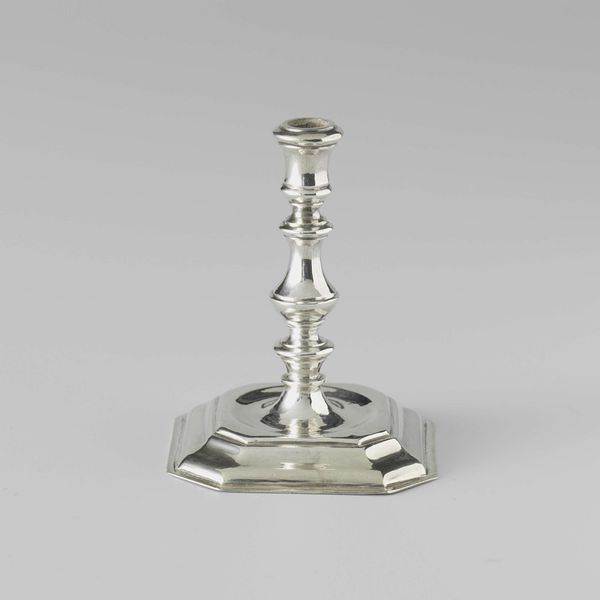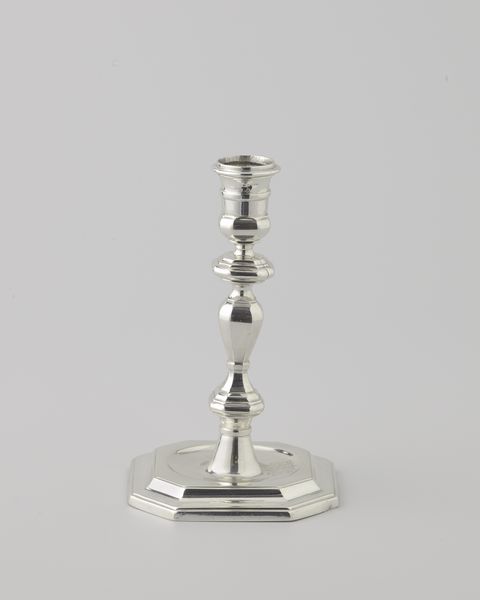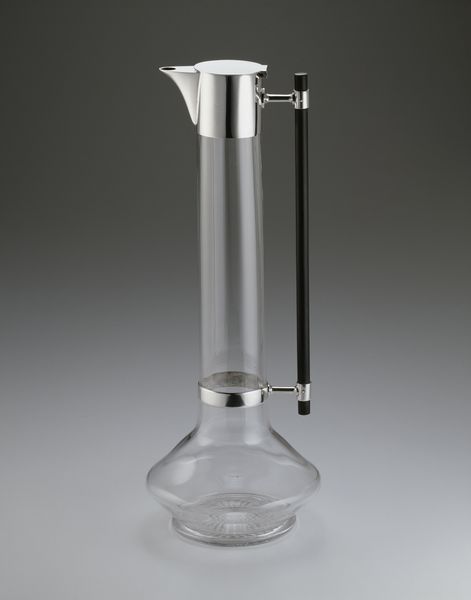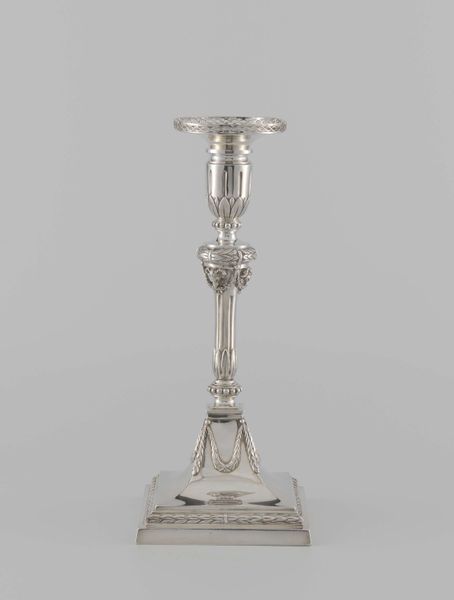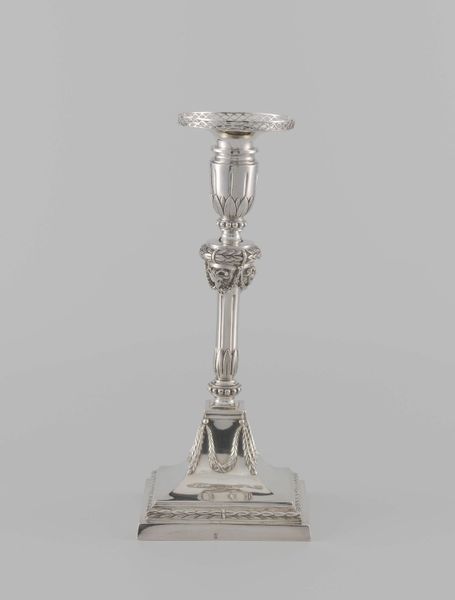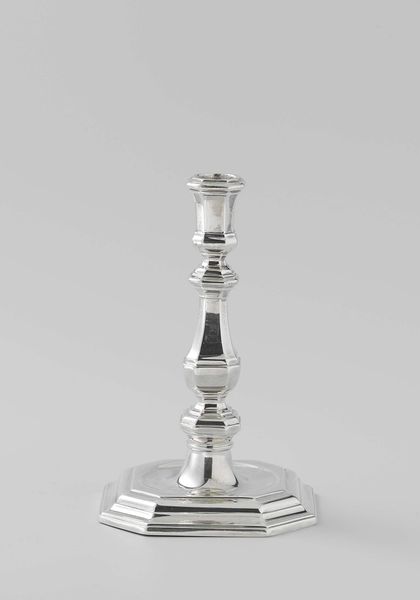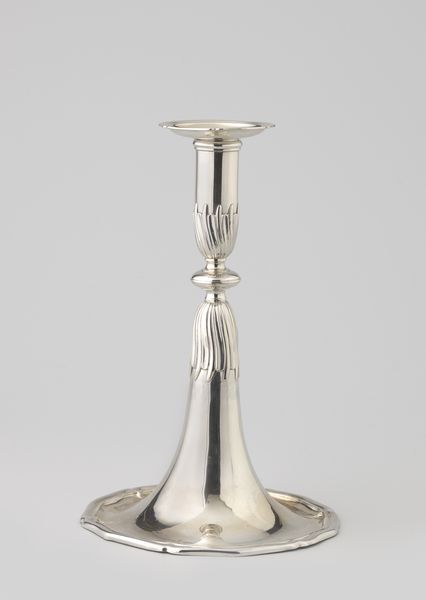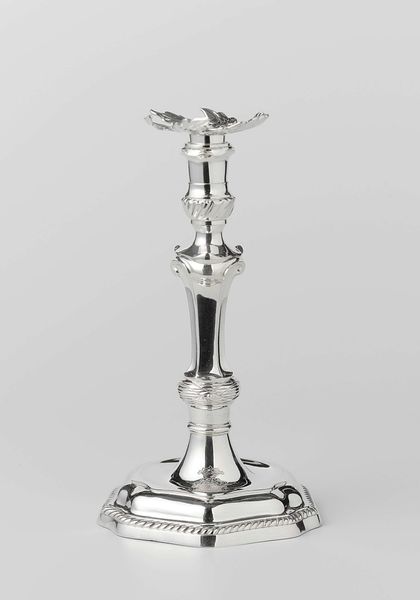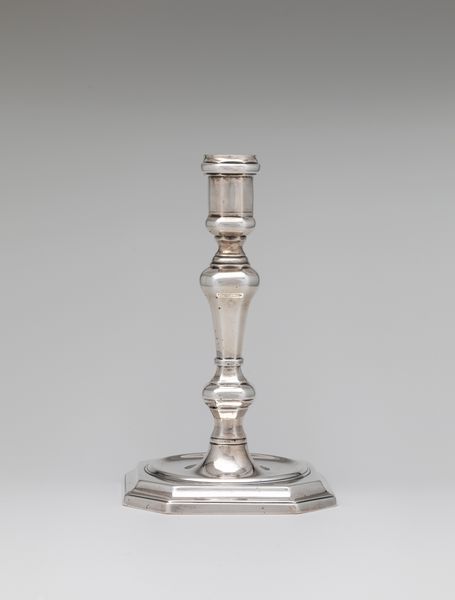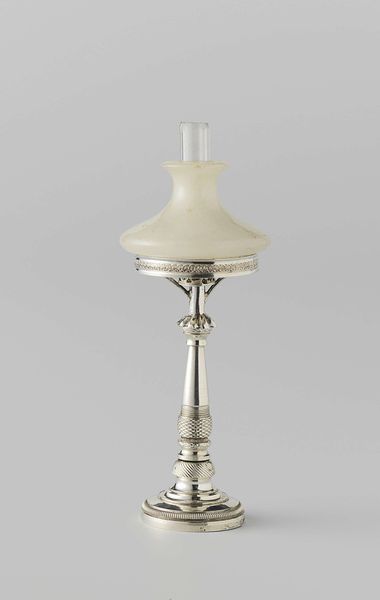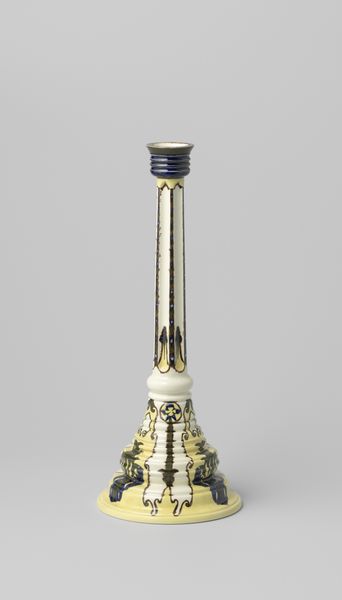
Dimensions: height 25.5 cm, length 13.8 cm, width 10.1 cm
Copyright: Rijks Museum: Open Domain
Editor: Here we have a silver candle holder crafted by Hendrik Boshart, likely around 1789 or 1790. The baroque style is pretty clear. It feels both elegant and sturdy at the same time. What aspects of this piece really stand out to you? Curator: It's interesting to consider this "Kandelaar" not just as a decorative object, but as a product of its time, crafted from silver – a material laden with socioeconomic significance. Silver production involved mining, refining, and skilled craftsmanship; each stage reflective of labor conditions and the broader economic system. Consider the Baroque style, seemingly decorative, as a marker of power and luxury in pre-revolutionary Europe. The act of displaying this candlestick was as important as its function, signaling wealth and status. Editor: So, looking at it as a symbol, instead of just decoration. What about the actual production of the candlestick? Does the way it's made tell us something? Curator: Precisely. Think about the silversmith. Boshart’s skill represents a specific form of artisanal labor. Silver objects like this were often made using techniques like hammering, casting, and chasing. Knowing that helps us appreciate not only the final form but also the material's transformation, from raw ore to a finished product desired and bought by a specific segment of society. Editor: It’s amazing how a simple candle holder can illuminate so much about society! Thanks for shifting my perspective on how to view such artwork. Curator: Indeed! By exploring the processes, the material, and the social context in which art is created and consumed, we move past pure aesthetics and grasp the historical narratives embedded within.
Comments
No comments
Be the first to comment and join the conversation on the ultimate creative platform.
